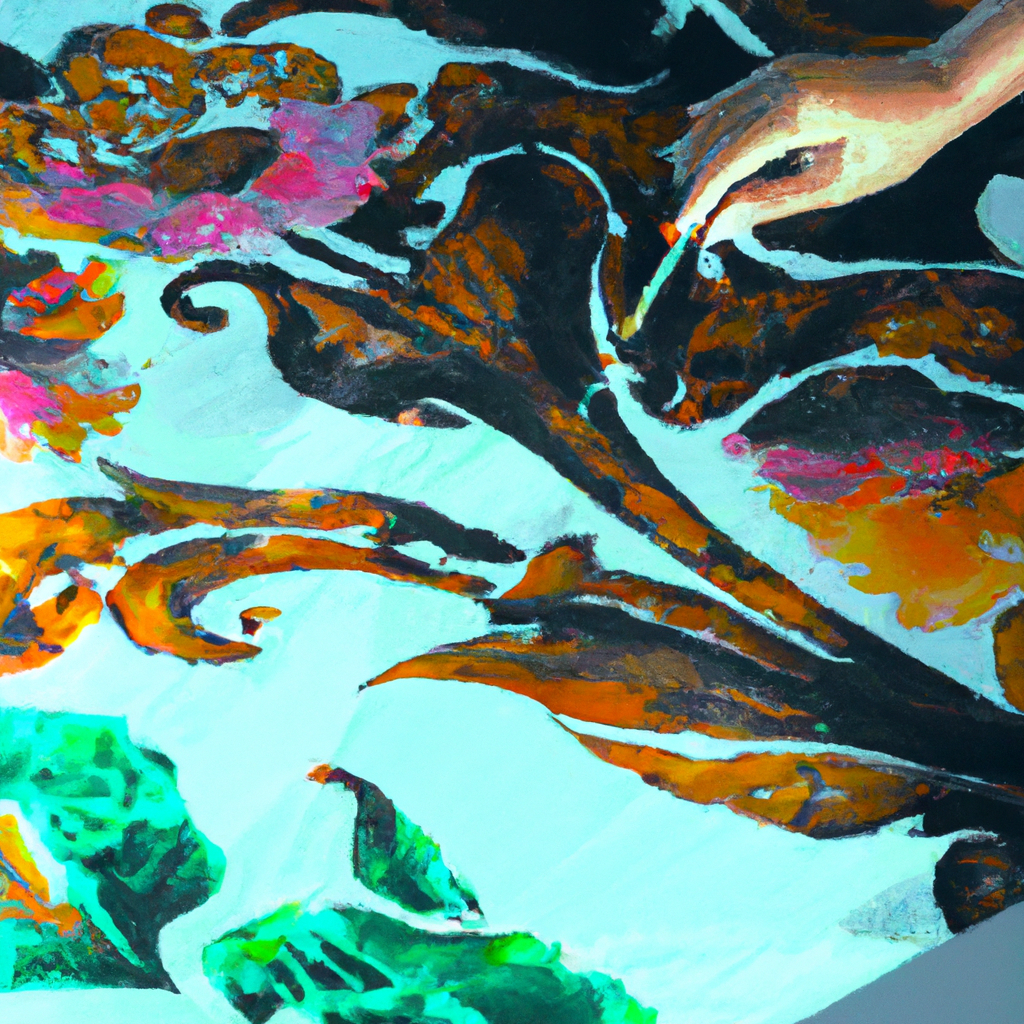Batik art is a unique form of textile art that has been practiced for centuries across various cultures. It is a technique that involves the application of wax and dyes to create intricate and colorful designs on fabric. In this article, we will explore the process involved in creating batik art, from design to completion, and delve into the history and traditional techniques used in this craft.
Designing the Batik Artwork
The first step in creating batik art is to design the artwork. This can be done using a pencil or pen on paper or using a computer software program. The design is then transferred to the fabric using a lightbox or tracing paper. It is essential to keep the design simple and bold since intricate designs can be challenging to execute using the batik technique.
Waxing the Fabric
Once the design is transferred to the fabric, the next step is to apply wax to the areas that should remain white or the original color of the fabric. This is done using a tool called a tjanting, a small copper or brass bowl with a spout and a handle. The tjanting is filled with melted wax, and the artist applies it to the fabric using a controlled motion to create a line or fill in a specific area. Alternatively, a brush or stamp can be used to apply the wax.
Dyeing the Fabric
After the wax has been applied, the fabric is dyed in the first color. The dye penetrates the fabric in the areas that are not covered by the wax. The fabric is then washed to remove any excess dye and left to dry. This process is repeated for each color used in the design, with the wax being applied to the areas that should remain the current color before each dyeing process.
Removing the Wax
Once the final color has been applied, the next step is to remove the wax. This is done by placing the fabric between layers of absorbent paper and ironing it. The heat from the iron melts the wax, which is then absorbed by the paper. This process may need to be repeated several times to ensure that all the wax has been removed.
Finishing the Batik Artwork
After the wax has been removed, the fabric is washed, dried, and ironed. The final result is a vibrant, colorful, and unique piece of handmade batik fabric.
Traditional Batik Techniques
Batik art has a rich cultural history and is practiced in many countries, including Indonesia, Malaysia, India, and Africa. Traditional batik techniques vary depending on the culture and region. For example, in Indonesia, batik is made using a canting, a tool similar to a tjanting, but with a different shape and size. In Malaysia, batik is made using a copper block stamp called a cap. In Africa, batik is made using a paste made from cassava starch and natural dyes.
Batik Tools
The tools used in batik art vary depending on the technique and region. The most common tools include a tjanting or canting, a brush, and a stamp. Other tools include a wax pot, an iron, a lightbox, and tracing paper.
Batik History
Batik art has a long and rich history that dates back to ancient times. It is believed to have originated in Egypt and then spread to Asia and Africa. Batik has been used for clothing, wall hangings, and ceremonial purposes. In Indonesia, batik has been declared a Masterpiece of Oral and Intangible Heritage of Humanity by UNESCO.
Conclusion
Creating batik art is a complex and time-consuming process that requires skill, patience, and creativity. The process involves designing the artwork, applying wax to the fabric, dyeing the fabric, removing the wax, and finishing the artwork. Traditional batik techniques vary depending on the culture and region, and the tools used vary as well. Batik art has a rich cultural history and is considered a valuable craft across the world.







